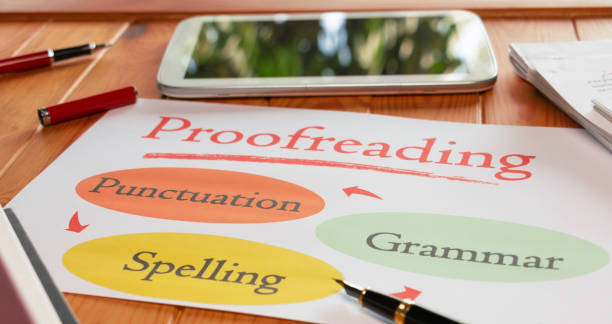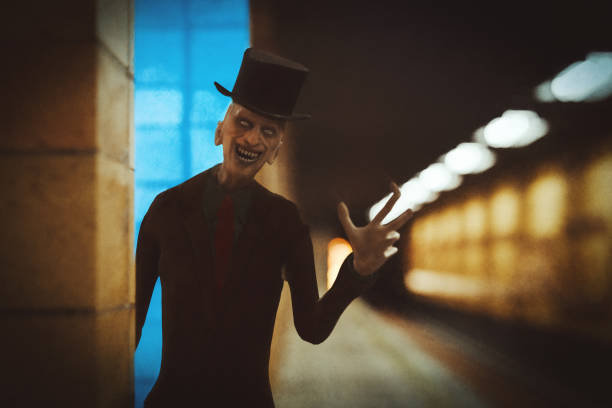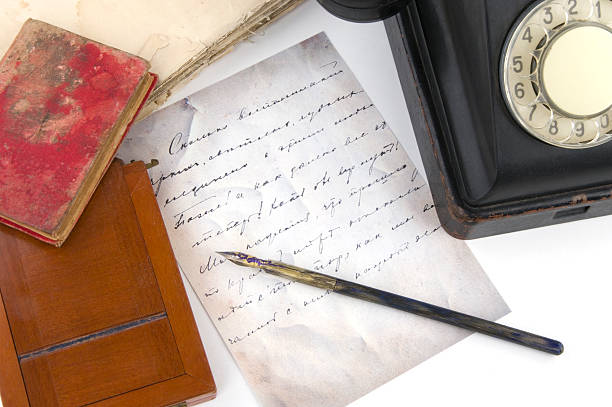
Writing Nestling


How To Improve Creative Writing (18 Effective Ways)
Embarking on the journey to improve one’s creative writing is like setting sail into an uncharted sea of boundless imagination and linguistic exploration.
Creative writing, a realm where words transform into vivid narratives, characters come to life, and emotions are painted across the pages, is a skill that thrives on constant growth and evolution.
In this guide, we will traverse the landscape of creative writing, delving into its various forms, mastering the craft, and unlocking the secrets to becoming a more skilled and imaginative writer.
Whether you’re a seasoned wordsmith seeking refinement or a budding writer just beginning your literary voyage, the path to improvement is a rich tapestry waiting to be woven, where inspiration knows no bounds, and storytelling becomes an art form.
So, fasten your literary seatbelt, for the journey to enhance your creative writing prowess is about to commence.
Table of Contents
How To Improve Creative Writing
To improve your creative writing skills, follow these steps:
Read Widely:
Read a diverse range of literature, including fiction, non-fiction, poetry, and different genres. This exposure will help you understand various writing styles and techniques.
Write Regularly:
Practice writing consistently. Set aside dedicated time each day or week to write. The more you write, the better you’ll become.
Expand Your Vocabulary:
Work on building a rich vocabulary. Learn new words, their meanings, and how to use them effectively in your writing.
Study Grammar and Punctuation:
A strong grasp of grammar and punctuation is essential. Review the rules and practice to avoid common mistakes.
Create a Writing Routine:
Establish a routine that works for you. Whether it’s early in the morning, late at night, or during lunch breaks, find your optimal writing time.
Outline Your Ideas:
Plan your writing in advance. Create outlines, mind maps, or notes to organize your thoughts before you start writing.
Set Writing Goals:
Define clear goals for your writing projects. Whether it’s completing a short story , novel, or a series of articles, having goals keeps you motivated.
Seek Feedback:
Share your work with peers, writing groups, or mentors. Constructive feedback helps you identify areas for improvement.
Revise and Edit:
Writing is rewriting. After you’ve completed a draft, revise and edit your work for clarity, coherence, and style.
Experiment with Style and Genre:
Don’t be afraid to try different writing styles and genres. Experimentation can help you discover your unique voice.
Read Aloud:
Reading your work aloud can help you catch errors, awkward phrasing, and improve the rhythm of your writing .
Be Observant:
Pay attention to the world around you. Observing people, places, and events can provide inspiration and authenticity to your writing.
Overcome Writer’s Block:
When you’re stuck, try free writing, brainstorming, or taking a break to refresh your creativity.
Stay Inspired:
Surround yourself with inspiring sources, whether it’s art, nature, music, or conversations. Inspiration can fuel your creativity.
Edit and Proofread:
Once you’ve completed your writing, thoroughly edit and proofread it for spelling, grammar, and punctuation errors.
Publish and Share:
Share your work through blogs, social media, or submit it to publications. Public sharing can provide valuable feedback and exposure.
Learn from Feedback:
Take feedback seriously and use it as a tool for improvement. Analyze critiques to enhance your writing skills.
Keep Learning:
Writing is an ongoing journey. Continuously seek to learn and grow as a writer by attending workshops, reading about writing, and experimenting with new techniques.
Remember, improving your creative writing skills takes time and dedication. Patience, persistence, and a willingness to learn are key to becoming a better writer.

Understanding Creative Writing
Understanding creative writing is like embarking on a journey into the boundless realm of imagination, where words become brushstrokes, painting the canvas of your mind with vivid worlds, complex characters, and emotions that dance off the page.
It’s a realm where you’re the architect of reality, bending the rules of ordinary language to conjure extraordinary stories that tickle the senses and stir the soul.
It’s about wielding the power of narrative to shape destinies, provoke thought, and make hearts skip a beat.
In the realm of creative writing, you’re both the magician and the audience, crafting spells with sentences that transport you and your readers to places unknown, unraveling mysteries, and exploring the infinite possibilities of human expression.
Different forms of creative writing
Creative writing encompasses a kaleidoscope of diverse forms, each a unique facet of the literary universe.
There’s the enchanting world of fiction, where novelists weave intricate plots and multidimensional characters that become your companions on thrilling adventures.
Poetry, a mesmerizing tapestry of words, paints vivid imagery and emotion in the concise space of a few lines.
Non-fiction is a realm of truth and authenticity, where writers illuminate reality with memoirs, essays, and journalistic narratives. Screenwriting brings storytelling to life on the silver screen, capturing the hearts and minds of audiences worldwide.
These forms are but a glimpse into the labyrinth of creative writing, where the only limit is the boundaries of one’s imagination.
Elements of creative writing
The elements of creative writing are the building blocks that breathe life into words , transforming them into vibrant stories.
At the heart of any creative work lies the intricate dance of plot, where conflicts and resolutions unfurl like a well-orchestrated symphony.
Characterization paints portraits of individuals, each with their own quirks and depths, making them unforgettable to the reader.
Setting, a crucial backdrop, provides the stage upon which these tales unfold, influencing moods and actions.
Themes thread through the narrative like a hidden river, adding depth and purpose, while style is the unique fingerprint of the author, infusing the work with their voice and perspective.
These elements, in concert, give creative writing its compelling complexity , inviting readers to embark on journeys that resonate with their hearts and minds.
Cultivating a Creative Mindset
Cultivating a creative mindset is akin to tending to the most wondrous of gardens—the garden of the imagination.
It’s about donning the gloves of curiosity and nurturing the seeds of inspiration, coaxing them to bloom into vibrant ideas that dance in the sun-dappled meadow of your thoughts.
In this garden, writer’s block withers under the warmth of persistence, and the weeds of self-doubt are plucked away with unwavering belief in your creative potential.
It’s a sanctuary where meditation and mindfulness are the water and sunlight, ensuring that the fruits of your imagination grow ripe and abundant.
In this verdant oasis, you are the creator and the caretaker, shaping the tapestry of your mind into a masterpiece of creativity that never ceases to blossom with new ideas.
Overcoming writer’s block
Overcoming writer’s block is like finding a hidden passage out of a labyrinth of your own thoughts. It’s the art of breaking free from the stranglehold of a blank page and transforming it into an open canvas.
Sometimes, the most formidable adversary is not the lack of ideas but the daunting prospect of beginning. To conquer this nemesis, one must navigate a myriad of techniques, from freewriting and brainstorming to changing the physical environment, in order to unearth the buried treasure of creativity within.
It’s a mental jigsaw puzzle where pieces of inspiration are scattered, and solving it involves patience, resilience, and sometimes simply allowing your mind to wander until it stumbles upon that elusive spark that will ignite your words.
Overcoming writer’s block isn’t just a battle won; it’s a gateway to the ever-expanding universe of storytelling, waiting to be explored with fervor and imagination.
Developing a writing routine
Developing a writing routine is akin to crafting a symphony out of the everyday humdrum. It’s the art of carving out sacred moments in the day, allowing the muse to speak amid the cacophony of life’s demands.
A writing routine is the scaffold that supports the architecture of creativity, providing the structure and discipline necessary for the magic of storytelling to flourish.
Whether it’s the first light of dawn or the stillness of midnight, these designated hours become the writer’s sanctuary, the place where the mind opens up like a treasure chest of ideas, and words flow like a river.
It’s in these moments of consistency that the craft evolves, enabling writers to hone their skills, unravel narratives, and beckon inspiration at will.
Ultimately, a writing routine is a personal ritual that weaves creativity into the fabric of daily existence, transforming the ordinary into the extraordinary, one word at a time.

Mastering the Craft
Mastering the craft of writing is like harnessing the mystical forces of language to conjure entire universes from the ink of your pen.
It’s a lifelong journey of delving into the labyrinth of words, where each sentence becomes a brushstroke, and every paragraph a brush dipped in the palette of emotions.
It’s an alchemical process, where you transmute raw ideas into literary gold, refining your art through an unending cycle of creation, revision, and relentless pursuit of perfection.
Every metaphor, every plot twist , and every character’s whisper becomes a note in the grand symphony of storytelling, where the crescendo is the moment you realize you’re not just a writer; you’re a sorcerer, weaving spells with every keystroke, capturing the hearts and minds of readers with the magic of your narrative.
Vocabulary and Language
Vocabulary and language are the enchanting threads that weave the tapestry of storytelling. A writer’s arsenal of words is akin to a painter’s palette, each word a unique hue that, when skillfully blended, creates vivid imagery and evokes powerful emotions.
A rich and varied vocabulary is the cornerstone of effective communication, allowing writers to express the nuances of thought and sentiment with precision and eloquence.
Language, on the other hand, is the vessel that carries these words, shaping the tone and rhythm of a narrative.
The beauty of this interplay lies in the writer’s ability to select the perfect word, the ideal phrase, and the most evocative metaphor, thereby sculpting a literary masterpiece that resonates with readers, captivating their senses, and transporting them to worlds of imagination and wonder.
In the realm of creative writing, vocabulary and language are the keys to unlocking the full spectrum of human experience and imagination.
Writing Techniques
Writing techniques are the chisels and brushes of the wordsmith, essential tools that sculpt and paint the narrative.
They encompass a spectrum of strategies that shape the flow and impact of a piece of writing. “Show, don’t tell” is the art of letting readers experience a story through sensory details and actions, fostering a deeper connection.
Crafting authentic dialogue breathes life into characters, allowing them to converse and reveal their personalities naturally.
The choice of point of view, whether first person, third person, or omniscient, defines the lens through which the reader perceives the tale.
These techniques, like a craftsman’s skills, enable writers to craft stories with finesse, immersing readers in vivid landscapes, relatable characters, and intricate narratives, making the written word a portal to realms of imagination and emotion.

Reading as a Writer
Reading as a writer is akin to peering behind the scenes of a magnificent stage production to witness the magic of storytelling in its purest form.
It’s a journey where the reader transforms into a literary detective, dissecting the prose, unraveling the plot, and examining the intricate brushstrokes of the author’s craft.
With each turn of the page, a writer learns the secret language of pacing, character development, and dialogue that is whispered through the text.
It’s an immersive masterclass that teaches the orchestration of tension, the symphony of foreshadowing, and the art of unveiling mysteries.
In this dual role of reader and writer, one discovers that every book is not just an escape but an invitation to the backstage, where the invisible threads of narrative manipulation are spun, inspiring the storyteller within to reach new heights and craft unforgettable tales.

Analyzing literature
Analyzing literature is akin to embarking on an archeological expedition into the layers of human expression and experience.
It’s a fascinating journey where each page holds the whispers of the past and the echoes of the author’s soul.
As one delves into the intricacies of a literary work, it’s like decoding a cryptic message, revealing the hidden treasures of symbolism, theme, and narrative structure.
Every word, sentence, and character becomes a clue in a grand puzzle, inviting you to explore the profound depths of the human psyche and society.
In the process of literary analysis, readers not only unearth the intellectual and emotional nuances of a text but also gain a profound appreciation for the artistry of the written word, for it is in these revelations that the alchemy of storytelling is unveiled, proving that literature is not merely ink on paper, but a mirror reflecting the intricate mosaic of human existence.

Learning from other authors
Learning from other authors is akin to a masterclass in the art of storytelling. It’s an exquisite journey of exploration, where you walk in the footsteps of literary giants, witnessing their genius unfold across the pages of their works.
These authors, like mentors from afar, offer invaluable lessons in character development, plot structure, and the delicate dance of language.
With each book you read, you glean insights into the diverse ways authors craft their narratives, be it the lyrical prose of one or the gripping dialogue of another.
Their stories serve as templates, guiding you in understanding the subtleties of storytelling, nurturing your creative instincts, and sparking that inner fire of inspiration.
In the pages of their books, you find not just tales, but the wisdom of those who have paved the way, ready to illuminate your path as you embark on your own journey of writing.
Building a personal library
Building a personal library is like assembling a treasury of knowledge, imagination, and soul. Each book, lovingly arranged on the shelves, is a passport to different worlds, eras, and minds.
It’s a sanctuary where you can escape the mundane and embark on an endless odyssey of exploration, enlightenment, and enchantment. Your personal library becomes a reflection of your intellectual curiosity and passions, a curated collection of stories and wisdom that have resonated with you.
Beyond the tangible beauty of bound pages, it’s a space where you can seek refuge, inspiration, and solace.
In this haven, books aren’t just inanimate objects; they are the keepers of dreams, mentors, and the compass that guides you on your own creative journey, whispering their stories and secrets, ready to be discovered anew each time you open their pages.
Research and Fact-Checking
Research and fact-checking are the unsung heroes of the writer’s craft, the secret agents who ensure that the tapestry of fiction and the canvas of non-fiction remain unblemished by errors.
Like intrepid explorers, writers embark on quests for knowledge, sifting through archives, traversing the corridors of history, and plumbing the depths of the digital ocean.
Fact-checking is the lighthouse that guards against the treacherous cliffs of misinformation, ensuring that the narratives we weave are anchored in truth.
It’s not just a scholarly pursuit; it’s the alchemy that transforms a story from mere entertainment into a portal to the worlds, cultures, and ideas it seeks to represent.
In the realm of research, writers become detectives, unearthing secrets, unmasking mysteries, and painting the scenery with the vivid strokes of authenticity.
Without this duo, the magic of storytelling would lose its luster, and readers would be adrift in a sea of uncertainty.
Importance of accuracy in creative writing
The importance of accuracy in creative writing cannot be overstated, for it is the cornerstone upon which the credibility and resonance of a narrative are built.
While creativity allows us to conjure imaginary realms and characters, these creations must find their roots in a foundation of truth.
Factual accuracy in the details of a story, whether it’s historical, scientific, or cultural, lends authenticity to the narrative, enriching the reader’s experience by making the fictional world feel tangible and relatable.
Inaccuracies can disrupt the suspension of disbelief, pulling readers out of the story, and eroding the trust they place in the author.
Moreover, for works that explore complex themes or socio-cultural issues, accuracy is paramount in promoting understanding and empathy.
By upholding the value of accuracy, creative writing can reach its full potential, becoming a powerful vessel for both entertainment and enlightenment.

Finding Your Voice
Finding your voice in the vast wilderness of creative expression is like discovering a hidden gem within your own soul.
It’s not just about words; it’s the symphony of your thoughts, your emotions, and the unique cadence of your experiences coming to life on the page. Your voice is the compass that guides you through the labyrinth of creativity, allowing you to navigate the realms of storytelling with authenticity.
It’s a fingerprint that distinguishes your work from the rest, making your narratives resonate with a singular, unforgettable resonance.
Finding your voice is not just a revelation; it’s a journey of self-discovery, an ongoing exploration of who you are and how you want to connect with the world through the magic of words.
It’s the moment when you realize that your voice, unlike any other, is the key to unlocking the hearts and minds of your readers, inviting them to explore the world as you see it and share in the emotions that define your unique narrative.
Personal style and uniqueness
Personal style and uniqueness in writing are the vibrant colors that distinguish an artist’s canvas from all others.
Your writing style is the echo of your personality, your perspective, and the experiences that shape you. It’s the idiosyncratic rhythm of your sentences, the selection of words that resonate with your soul, and the peculiar nuances that define your narrative fingerprint.
Embracing your uniqueness is not a departure from the norm but a celebration of individuality, an affirmation that your voice is unlike any other.
In a world filled with words, it’s your personal style that makes your work stand out, inviting readers to explore the world through your eyes and experience the emotions that pulse through your stories.
Your style is your signature, and your uniqueness is the spark that ignites the literary world, reminding us that in the realm of creativity, diversity is the catalyst for innovation and the source of endless inspiration.
Authenticity in storytelling
Authenticity in storytelling is the golden thread that weaves a powerful connection between the writer and the reader.
It’s the unwavering commitment to truth, not in the factual sense, but in the emotional and human sense. Authentic storytelling dares to venture into the raw, unvarnished corners of the human experience, revealing vulnerability, joys, struggles, and complexities with unapologetic honesty.
It acknowledges the imperfections of characters, the messiness of life, and the ambiguity of morality.
Authenticity in storytelling is the bridge that allows readers to see themselves in the characters and situations, to empathize, to confront their own truths, and to resonate with the essence of the narrative.
It’s a reminder that, in the world of storytelling, the most profound impact is often not achieved through escapism but through a mirror reflecting the truth of our shared humanity, inviting us to explore, understand, and embrace the beautifully imperfect mosaic of human existence.
Overcoming Challenges
Overcoming challenges is akin to harnessing the fiery spirit of a phoenix, rising from the ashes of adversity with newfound strength and resilience.
It’s the grand adventure of our lives, where obstacles are not roadblocks but stepping stones towards personal growth and transformation.
Challenges are the litmus test of character, the forge where determination is tempered, and where the human spirit finds its true mettle.
In the face of these trials, we discover untapped reserves of courage, creativity, and perseverance that we never knew existed.
Like intrepid explorers charting uncharted territories, we boldly face the unknown, seeking not just victory but self-discovery, for it is in the crucible of challenges that our true potential is revealed, and we emerge as the heroes of our own stories.
Publishing and Sharing Your Work
Publishing and sharing your work is like setting a fleet of paper boats adrift on the vast sea of human connection.
It’s the culmination of the creative journey, where words born in the depths of your imagination finally take flight, finding their way into the hearts and minds of readers around the world.
It’s not just about self-expression; it’s the bridge that unites creators with an audience eager to embark on the emotional and intellectual voyages they’ve crafted.
Sharing your work is an act of courage and vulnerability, inviting both praise and criticism, but it’s also an affirmation that your voice is worthy of being heard.
It’s the act of extending a hand to others, saying, “Come, join me on this journey,” and allowing your stories to become a part of the tapestry of the human experience.
In the realm of publishing and sharing, you become a storyteller not just for yourself but for the world, weaving connections, igniting conversations, and leaving an indelible mark on the shared narrative of humanity.

Traditional vs. self-publishing
The choice between traditional and self-publishing is a crossroads that writers often face, each path offering its own set of opportunities and challenges.
Traditional publishing, akin to the majestic gates of a literary castle, can provide the author with the validation and resources of an established publishing house, offering professional editing, cover design, and broad distribution networks.
It opens doors to bookstores and literary awards, but it also demands patience and perseverance in the face of stringent gatekeepers. Self-publishing, on the other hand, is the democratization of literature, an open road that allows authors to take the reins of their creative destiny.
It offers control and speed of publication but requires authors to take on multiple roles, from editing to marketing.
Ultimately, the decision hinges on individual goals and preferences, as each path holds the promise of sharing stories with the world, whether under the watchful eye of a traditional publisher or the entrepreneurial spirit of self-publishing.
Continuing Education
Continuing education is the compass that keeps the writer’s journey ever-advancing. It’s the symphony of growth in a world that constantly whispers new stories and knowledge.
Imagine it as an uncharted library, where each book holds the key to unlock a new realm of understanding, and each workshop or course is an invitation to dance with different writing techniques.
It’s not just about honing existing skills; it’s about unfurling new horizons and uncovering hidden treasures in the treasure chest of literary prowess.
Continuing education is the echo of the writer’s heartbeat, a reminder that the world of words is boundless and ever-evolving, and that within its embrace, the writer can continue to explore, learn, and craft stories that leave an indelible mark on the literary landscape.
Frequently Asked Questions (FAQ) about How To Improve Creative Writing
What is creative writing, and why is it important to improve this skill.
Creative writing is the art of crafting original and imaginative stories , poems, or prose. It’s important to improve this skill because it not only enhances your ability to express yourself but also unlocks the door to a world of creativity, enabling you to engage and captivate readers.
How can I overcome writer’s block and boost my creativity?
Overcoming writer’s block can be achieved through various techniques like free writing, mind mapping, or changing your writing environment. To boost creativity, consider practicing mindfulness, exploring new experiences, and cultivating a daily writing routine.
What are some effective strategies for improving my vocabulary and language skills?
Expanding your vocabulary can be done by reading widely, using a thesaurus, and playing word games. To enhance language skills, study grammar and syntax, experiment with different writing styles, and immerse yourself in literature.
What are some common writing techniques to improve the quality of my creative writing?
Common writing techniques include “show, don’t tell,” crafting compelling dialogue, and mastering point of view. These techniques help to make your storytelling more engaging and immersive.
How can I find my unique voice as a writer?
Finding your unique voice involves experimenting with different writing styles, embracing authenticity, and understanding that your individual perspective is your greatest asset. It’s about being true to yourself and your experiences.
What’s the importance of reading as a writer, and how can I analyze literature effectively?
Reading exposes you to different writing styles and genres, helping you learn and grow as a writer. Effective analysis of literature involves examining themes, characters, and symbolism, and considering the author’s use of language and narrative structure.
What are the differences between traditional publishing and self-publishing, and how do I decide which is right for me?
Traditional publishing involves working with established publishing houses, while self-publishing allows you to independently release your work. The choice depends on your goals, the level of control you want, and your willingness to handle aspects like marketing and distribution.
How can I ensure the accuracy of my work, especially when writing about real-world facts and details?
To ensure accuracy, research extensively using reliable sources, fact-check rigorously, and consider seeking feedback from experts in the field you’re writing about.
What’s the role of continuing education in improving creative writing, and where can I find resources for it?
Continuing education helps you stay updated with the latest writing trends and hone your skills . You can find resources through writing workshops, online courses, writing groups, and literary events.
How do I deal with writer’s rejection and criticism constructively, and stay motivated in my writing journey?
Dealing with rejection and criticism involves developing resilience, learning from feedback, and keeping your passion for writing alive. Staying motivated can be achieved by setting goals, celebrating small wins, and surrounding yourself with a supportive writing community.
In the realm of creative writing, the journey to improvement is an endless odyssey, an ever-evolving expedition into the limitless depths of imagination and language.
It’s a path that weaves through the intricacies of plot, character, and style, as well as the nuances of authenticity and self-expression. Whether you are a seasoned wordsmith or a budding writer, the pursuit of creative excellence is a lifelong commitment to self-discovery, growth, and storytelling.
As you navigate the labyrinth of writer’s block, craft your unique voice, and refine your skills, remember that creative writing is not merely a craft; it’s a journey of self-expression, a gateway to new worlds, and a conduit for shared experiences.
So, pen in hand and heart afire, continue to embark on this voyage, for it is through the continuous exploration of your own creative depths that you will not only improve your writing but leave an indelible mark on the world of literature.
Your story is waiting to be told, and the pen is your magic wand, the world your canvas.
Happy writing !
Related Posts:
- What Does Freeform Mean In Fanfiction?
- How To Improve Grammar Skills (11 Important Steps)
- How To Write A French Accent (10 Important Steps You…
- How To Improve Descriptive Writing (12 Best Ways You…
- How To Set Smart Writing Goals For 2024
- How To Improve Literacy Writing Skills (14 Best Tips)
Similar Posts

How To Write An Editorial (12 Important Steps To Follow)
Embarking on the journey of crafting an editorial is akin to stepping into the arena of persuasive prowess, where words transform into instruments of influence and ideas wield the power to shape perspectives. Writing an editorial is not merely an exercise in expression; it is a strategic dance with language, a nuanced symphony where the…

How To Write A Vampire Character (10 Best Tips)
Embark on a moonlit journey into the realms of creativity as we unveil the secrets of crafting a vampire character that transcends the clichés and breathes fresh life into the supernatural narrative. In this exploration of the macabre and the mysterious, we will delve into the cryptic lore of vampires, disentangle the threads of timeless…

How To Write A Southern Accent (10 Best Tips)
Welcome to the enchanting realm of Southern accents, where the cadence of speech dances like fireflies on a summer night and every drawl carries the weight of history and hospitality. Crafting a Southern accent in writing is akin to capturing the essence of a cultural symphony, blending linguistic melody with regional authenticity. In this guide,…

How To Write A Scene With Multiple Characters (12 Best Tips)
Embarking on the art of writing a scene with multiple characters is akin to orchestrating a literary ballet where every participant plays a unique role in the narrative choreography. In this intricate dance of personalities, each character is a distinct instrument, contributing to the symphony of dialogue, actions, and emotions that unfold within the scene….

How To Improve Dissertation Writing (14 Important Tips)
Embarking on the challenging journey of dissertation writing requires more than just academic prowess; it demands a strategic and refined approach to transform complex ideas into a coherent scholarly narrative. As a magnum opus of academic endeavors, a dissertation necessitates meticulous planning, effective time management, and a keen understanding of the nuances involved in each…

How To Describe Rain In Writing (10 Important Steps)
Describing rain in writing is akin to capturing the essence of a timeless and ever-evocative phenomenon that has fascinated poets, novelists, and storytellers for centuries. Rain, in its many forms and moods, can be a powerful narrative device, setting the stage, conveying emotions, and mirroring the complexities of human experience. In this guide, we will…

IMAGES
VIDEO
COMMENTS
Continuously seek to learn and grow as a writer by attending workshops, reading about writing, and experimenting with new techniques. Remember, improving your creative writing skills takes time and dedication. Patience, persistence, and a willingness to learn are key to becoming a better writer.